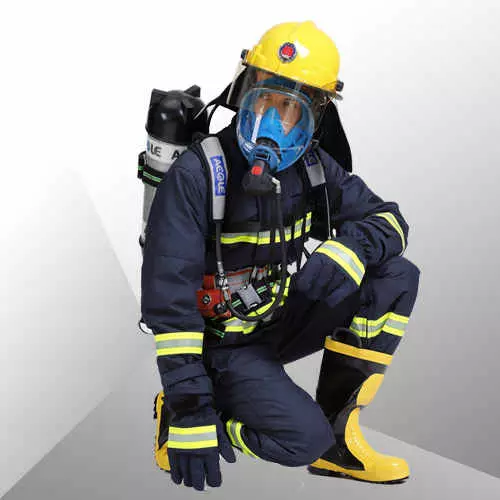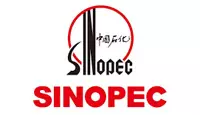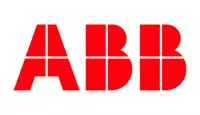Shanghai, China
+86-17317656853
inquiry@cgprotection.com



Information on each component of wildland fire personal protective equipment. will offer a better understanding of the thought processes in the design and criteria for selection:
Hardhat--a critical piece of wildland fire personal protective equipment(PPE), hardhats have saved many lives and prevented serious injuries by protecting the wearers against failing trees, limbs and rolling rocks. Current models are made of thermoplastics, such as polycarbonate, or of thermoset materials, such as fiberglass. Although they offer some protection, they were not designed to withstand radiated heat when temperatures exceed 350 F. They weigh less than 15.5 ounces, an especially important factor since 15 percent to 35 percent of heat loss occurs through the head. Special clips are added to attach goggles and night firefighting headlamps.

Face and Neck Shrouds--rectangular pieces of FR cloth that hang down from the firefighters' hardhats to the level of their shoulders. The front ends of the shroud overlap and fasten securely together with hook and pile tape (Velcro). Shrouds are often stuffed up into the space between the hardhat shell and the suspension liner. This allows greater face and neck cooling, but restricts air flow and cooling to the top of the head. Shrouds are used almost exclusively in wildland fire, as opposed to balaciava-style hoods used in structural firefighting.
Eye Protection--protection from smoke, dust and small flying objects is most effective using the "splash guard' goggles. They meet ANSI standards, allow prescription glasses to be worn and are relatively comfortable for 8to 16-hour shifts.
Shirts and Trousers--key components of the wildland fire personal protective equipment. MTDC began working on FR clothing in 1958. The first product was a shirt treated with fire resistant chemicals; these were introduced into field use in 1962. Cotton trousers were field evaluated along with the shirts but, because trousers are subject to greater wear and the treated cotton was not durable enough, FR trousers did not appear until 1974. The early shirts were made from an orange fabric and yellow cotton shirts were introduced in the late '60s, after studies showed the yellow to be more visible in dark and smoky environments. Also, there were several instances when orange shirts were mistaken for flames, and aircraft dropped fire resistant on crews on the line.
Today's yellow shirts and green pants are made of aramid fabric (Nomex IIIR). Aramid fabrics are durable and provide good thermal protection. Like most fabrics, aramid bums if exposed to flame, but stops burning when the flame is removed. Instead of melting or burning to ash, it forms a char that helps to protect the skin. Extensive experience on wildfires has shown that loose-fitting clothing is more important in prevention of serious bum injuries than the fire resistance of materials. Clothing that is tight-fitting poses a danger from radiant heat and heat stress, and at the same time reduces the firefighter's ability to perform. Flame-resistant clothing should be designed so that the movement of the wearer induces ventilation, which reduces moisture by a billows effect.
Openings allowing ventilation must be able to be closed quickly in cases where high external heat loads are encountered. This is one reason that USFS designed FR clothing to be loose and that shirt sleeves have Velcro for rapid closure of end openings. Buttons are oversized for easy fastening, and the collar can be turned up for added protection against radiant heat.
Coveralls & Jumpsuits--are discouraged by the USFS for the following reasons:
Coveralls are usually worn over other garments, restricting cooling and increasing heat stress and heart rates.
Coveralls are made from a single-weight fabric. Ideally, different weight fabrics are desirable for the upper and lower parts of the body. For example, a heavier, more durable fabric is needed for the legs and lower part of the body, whereas a lighter weight material on the upper body would help cooling by dissipating heat from the chest, back and arms.
Jumpsuits are made from shirt-weight material, and do not provide adequate leg protection.
Firefighter clothing is produced in limited numbers to keep costs down. With limited size distributions, one piece garments seldom fit many people properly because the distance between the crotch and shoulders varies so much.
One-piece garments made from FR materials are expensive. Unlike shirts and jeans, if part of the garment becomes unserviceable the entire garment must be replaced.
Gloves -- must be specially designed to protect the firefighter's hands against blisters, cuts, scratches and minor bums during routine firefighting. They also play a major fire protection role in the event of an aircraft accident or fire entrapment. Reviews of past fire entrapments have shown that, without gloves, a firefighter risks the loss of fingers from serious bums. This also may be true with conventional oil-tanned work gloves that bum or shrink in intense heat. Individuals entrapped in fire shelters also report that gloves are necessary to hold the hot shelter material to the ground without getting burned. Wild] and fire gloves designed by MTDC are full-grained, chrome-tanned leather; the full-grain requires narrower stitches to hold the seams than does the split-grain, and the chrome-tanning provides excellent protection against heat and shrinkage while resisting stretching when wet.
Boots--also critical in Midland firefighting, because of the steep, uneven terrain that exists in much of the country. Wildland fire boots, commercially available from a number of sources, are a minimum of 8 inches high, leather lace-type with skid resistant soles. Slips and falls account for more than 15 percent of all injuries in wildland fires, so non-slip soles are essential. Steel-toed boots are not recommended for Midland firefighting because of the potential for heat transference on the burned ground.
Fire Shelter--has become the most important component of the Midland firefighter's personal protective equipment over the past few years. The pup tent-like shelter is the only piece of equipment that offers lifesaving protection in the event of an entrapment. Estimated to have saved more than 300 lives since its use was made mandatory in 1977 by the U.S. Forest Service, it reflects radiating heat, helping the firefighter in two primary ways: first, it provides more breathable air; and second, it gives firefighters a way to protect their lungs and airways from flames and hot gases, the leading killers in entrapment.
Tags:
Shanghai C&G's personal protective clothing and PPE products are trusted by customers in the world. Our products are exported worldwide, with a strong presence in the United States, China, Japan, Germany, the United Kingdom, India, France, Italy, Brazil, and Canada. In addition, we have a significant customer base in other countries across each continent, including Australia, New Zealand, South Africa, Nigeria, and Egypt in Africa; Argentina, Chile, and Mexico in South America; Russia, South Korea, and Indonesia in Asia; Spain, Poland, and Turkey in Europe; and Saudi Arabia and the United Arab Emirates in the Middle East. Wherever you are in the world, we have the products you need to stay safe and protected. Contact us today to learn more about our products and how we can help you meet your safety needs.










© 2023 Shanghai C&G. All Rights Reserved.